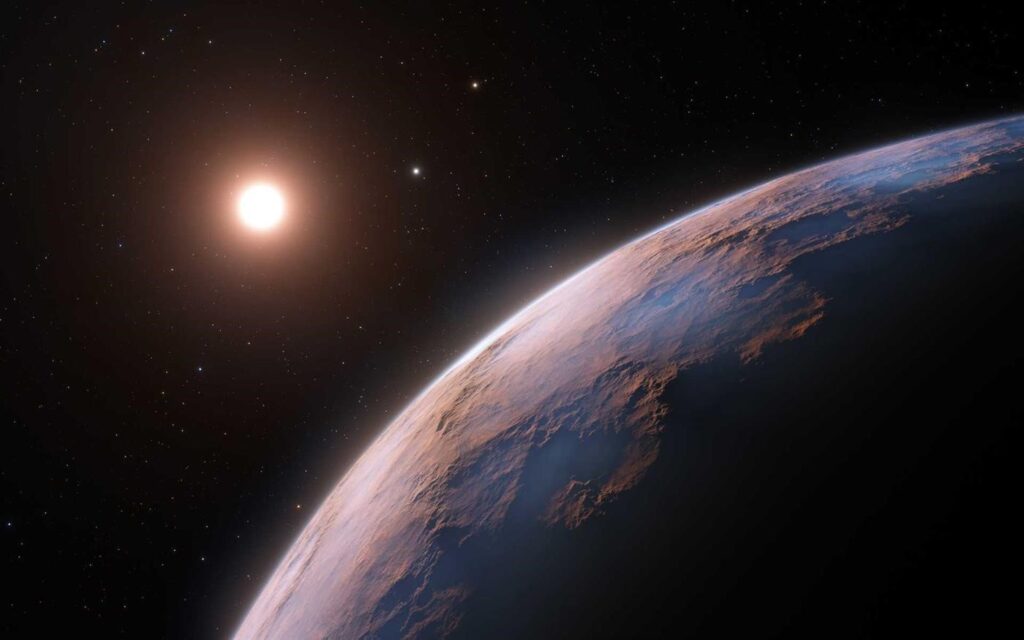The exoplanet, named Proxima d, was detected by a team led by a researcher from the Institute of Astrophysics and Space Sciences and is the “lightest” discovered using the radial velocity method.
An international team, led by researcher from the Institute of Astrophysics and Space Sciences (IAstro) João Faria, used the Espresso spectrograph, installed in the Very Large Telescope (VLT) of the European Southern Observatory (ESO), to detect a new planet around the closest star to the Sun – Proxima Centauri.
João Faria, the first author of the article now published in the journal Astonomy & Astrophysics, comments that “this discovery shows that the nearest star seems to harbor several Earth-like planets, which could be studied in detail or, who knows, even visited in the future".
Proxima d takes just five days to complete one orbit and is at a distance from its star of about a tenth of the distance between Mercury and the Sun. With only a quarter of Earth's mass, the planet's gravitational effect on the star is so small which causes Proxima Centauri to move at just 40 centimeters per second (or 1,44 kilometers per hour).
This becomes the least massive exoplanet detected so far with the radial velocity method.
Already last summer, an exoplanet half the mass of Venus, orbiting the star L98-59, had been discovered by a team led by IAstro researcher Olivier Demangeon, demonstrating that Espresso is sensitive to very low-mass planets.
But the detection of Proxima d was only possible thanks to a new method of data analysis, which has been developed by IAstro PhD student André Silva. This method allows extracting even more information from the spectra observed with Espresso, which results in greater precision in the measurement of radial velocity.
“This feat is extremely important, because it shows that the radial velocity method has the potential to reveal a population of “light” exoplanets like ours, which are thought to be the most abundant in our galaxy and which could potentially harbor life like us. we know it”, adds Pedro Figueira, scientist for the Espresso instrument at ESO.
Two other planets were already known around this star: the first, Proxima b, with a mass similar to that of Earth, orbits in the star's habitability zone and the second, the planet candidate Proxima c, with a long orbit of five years. .
Proxima b was detected in 2016 with the HARPS spectrograph, installed on ESO's 3,6-metre telescope and confirmed in 2020 with Espresso. The data used in 2020 already showed some evidence of a signal consistent with a planet, with a period of five days, but this was too weak to rule out activity from the star itself.
After a new observation campaign in 2021, it became clear that the best explanation would be the presence of a third exoplanet.
For Alexandre Cabral, researcher responsible for the Instrumentation and Systems for Astronomy team at IAstro: «This result demonstrates not only the quality of the research carried out at IAstro, but also the importance of participating in the construction of Espresso, allowing us to have privileged access to those who is currently the most advanced spectrograph in the study of exoplanets.”
The scientific project manager of the Portuguese Space Agency (Portugal Space), Cláudio Melo, also clarifies that «until the last decade of the last century, we only knew the planets of our own solar system. It is fascinating to see that Portugal's participation in ESO allows scientists, engineers and engineers from Portuguese institutions to participate in international impact projects such as ESPRESSO that contribute to the discovery of other worlds and to the understanding of our cosmic origins».
IAstro's strategy in this area, currently in full implementation with the Espresso spectrograph, will continue over the next few years, with the launch of the PLATO space telescope (ESA) in 2026, the ARIEL mission (ESA) in 2029, and the installation of the spectrograph HIRES on the largest next-generation telescope, the ELT(ESO), expected to be operational in 2030.





















Comments